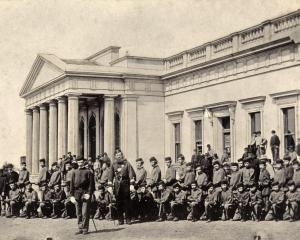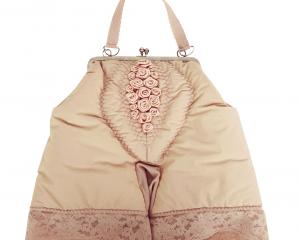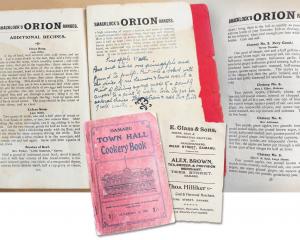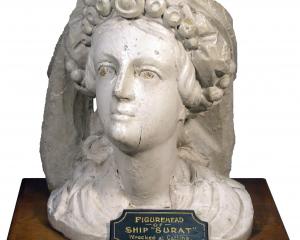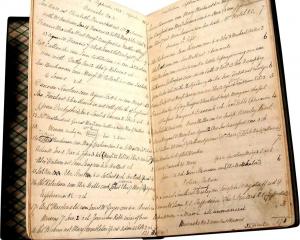Just how did a "beautifully spotted leopard'' come to be in the possession of Otago Museum? Rosi Crane explains.
Words inscribed on the wooden base of the stuffed leopard in the Animal Attic at Otago Museum give some insight into its history. You can see the words "Signor Chiarini Sumatra'', the phrase "Leopard or Panther'' and a date, "1885''.
On January 14, 1880, Signor Chiarini's Royal Italian Circus arrived by special train from Oamaru, and set up opposite what is now Queens Gardens.
The Otago Daily Times noted that on opening night the "weather turned out deplorable - so bad, indeed, that not even the unusual attraction offered could draw a full house''.
Chiarini's reputation was based on his 28 horses, which included a warhorse charger, a snow-white Arabian stallion and pairs of diminutive Shetland and Javan ponies.
Over the years, the number and types of animals in his circus increased.
At various times it included performing bison (that leapt over hurdles in the ring), a pair of performing zebras (that pulled a special cart) and a guanaco (a South American relative of llama and alpaca) that also leapt over hurdles.
By 1884, when the circus returned for its third visit, the menagerie also included an Australian emu, two elephants, monkeys, black panthers and two "beautifully spotted leopards''.
Chiarini boasted a "den of Performing Royal Bengal Tigers''.
According to the advertisement, the tigers would be introduced by "Mr Charles Warner, the intrepid lion tamer who handles these ferocious beasts without the slightest fear''.
The picture in the advertisement shows Warner dressed like a gladiator with a tiger, a lion and two leopards.
Training lions, and to some extent tigers, was a relatively easy job - they are naturally social cats - but training nocturnal leopards to perform would have been a lot harder.
The Southland Times reported that the three tigers paced "their dens to and fro with uncanny restlessness, ever and anon emitting a ferocious growl, and displaying an infinite wealth of crunching and swallowing capacity''.
In the neighbouring cage, several panthers and leopards "would do nothing but sleep''.
Chiarini's 1884-85 tour of New Zealand was fraught with problems.
In Napier, one of the five lions died from lung problems. Signor Chiarini kept the skin and presented the skeleton to Baker's Museum in Waipawa.
Such acts of generosity added to the publicity machine surrounding Chiarini's circus.
In most towns the circus visited, Chiarini made sure that children from the local orphanage were invited free of charge, a fact noted in his advertisements.
When the tour reached Dunedin it was reported that Chiarini had the "misfortune to lose one of his trained leopards'' to a "badly diseased'' heart.
Chiarini presented the carcass to Otago Museum.
The minutes of the April 1885 Otago Institute meeting record that a large leopard presented by Signor Chiarini was one of the most significant donations to the museum over a period of months.
Two puzzling entries in the university accounts for museum maintenance reveal that Chiarini was not that generous.
He received a payment of £1/15/0 on February 1, 1886 and a second for £6/10/0 on March 27, 1887. Exactly what the payments were for remains a mystery.
But it is clear that the skin was mounted by Otago Museum's taxidermist, Edwin Jennings, and placed on display. It remains on display to this day in the Animal Attic.
- Rosi Crane is an honorary curator at Otago Museum.




